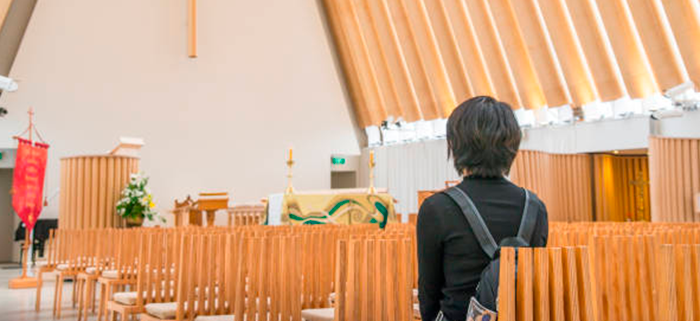Your eyes are not deceiving you. The title neither refers to “nuns” nor is it a misspelling. For the first time in the history of the United States, a 2020 Gallup poll has revealed that only 47% of American adults said they were members of a church, mosque or synagogue. That means 53% of American adults have no formal religious participation. Let’s break down that 53% number.
Much of the information in this blog comes from the book, The Nones: Where They Come From, Who They Are, and Where They Are Going (2021: Fortress Press), by Dr. Ryan Burge, an associate professor of Political Science at Eastern Illinois University.
Dr. Burge suggests that at least one fifth or 20% of the 53% are “nones.” Other research groups view the percentage of “nones” higher: Gallup says 21%, Pew Research Center posits 26%, and Cooperative Election Study estimates 32%. The possible range of “nones” is from one-fifth to one-third of those who have no religious participation. So who makes up this group of “nones?”
There are three groupings which make up the “nones:”
- Agnostics – these are people who believe that nothing beyond the material world can be known including whether there is a God or is not. For them, the existence of a God cannot be proven or disproven because there is no scientific evidence. This grouping is about one-sixth of all “nones.”
- Atheists – are people who do not believe in the existence of God. To them, God does not exist. This grouping is similar in size to agnostics but slightly larger.
- Nothing in particulars – these are people who not sure about the existence of God. They vacillate from unbelief to belief. In fact, from 2010 to 2014, about one-fourth of the people in this grouping joined a denomination. Two-thirds of “nones” can be categorized as “nothing in particulars.”
In terms of a profile of “nones,” there are some identifiable characteristics.
- Agnostics and atheists tend to be more male, white and college-educated.
- The average age of a “none” is 43-years-old.
- 32% of “nones” are people of color. The decline in the practice of Christianity is similar among whites, Blacks and Hispanics.
- 70% of “nones” do not have a college degree. The decline in the practice of Christianity is similar among the college-educated and non-college degree populations.
- So, what are the possible explanations for the growing number of “nones?” One explanation is that Christianity is becoming more politically conservative. People who leave Christianity often cite the politics of the Christian right as the reason.
A second explanation is that there is a general disengagement from organized religion which has been taking place for decades in the United States. There is a growing mistrust of large institutions and a view that organized religion is hypocritical.
The third explanation is that the decline in religious participation is consistent with religious trends around the world. The Pew Research Center has studied worldwide religious participation for decades. They have discovered a correlation between economic well-being and religious participation: wealthy countries are less religious and poorer countries are more religious. For decades, the United States has been an outlier, being a wealthy country and having a high level of religious participation. Among the strongest influences on this connection between wealth and religiosity have been the Protestant work ethic and the more recent evangelical “gospel of prosperity.” The Protestant work ethic is based on the Book of Proverbs and posits that God rewards the faithful with all the good things that life can provide. The evangelical “gospel of prosperity” takes being rewarded in this life even further by suggesting that the wealthier you are the more you are favored or “blessed” by God. It appears that the adherents of these beliefs are also waning in the United States.
What is this growing number of “nones” telling us? First, the fact that so many people are no longer practicing any religion should be a challenge to renew our commitment to proclaim the Gospel. It is obvious that whatever we are doing to evangelize is not working very well. Second, as the largest organized religious denomination in the United States, if any religious group can begin to address these issues of declining religious belief and practice, it will be the Catholic Church.


